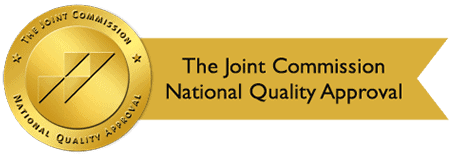By: Design for Change Recovery
Categories:
Historic Increase in Fatal Overdoses Due to Fentanyl
You are here:Several factors converged in the last few years to create a deadly overdose epidemic. As the COVID-19 virus mandates caused economic havoc across the nation, drug dealers also felt the crunch. So, they had to find creative ways to stay in business. One of their methods involves lacing their drugs with Fentanyl.
Why do dealers lace their drugs with Fentanyl? They do it because Fentanyl is a synthetic opioid that is 50 times stronger than heroin and 100 times more potent than morphine. But, it is cheaper than heroin. By adding fentanyl to heroin, they can increase their supply and keep the profits rolling in.
Why Are More People Using Fentanyl?
During the virus pandemic, more people turned to drugs and alcohol to help them cope with the stress, fear, and depression initiated by the lockdowns. Some had lost their jobs, ended up in financial distress, and had to adjust to the fact that every aspect of their lives had changed.
According to the CDC,
“13% of Americans reported starting or increasing substance use as a way of coping with stress or emotions related to COVID-19. Overdoses have also spiked since the onset of the pandemic.”
With the increased substance use came an increased risk of being exposed to Fentanyl-laced substances.
Since there are no quality control methods in place, no one realizes Fentanyl is in the heroin they purchase. As a result, according to the CDC, more than 100,000 total overdoses occurred in 12-months ending in April of this year. Fentanyl is responsible for the majority of those deaths.
Other Facts About Fentanyl You Should Know
Illicitly manufactured fentanyl is extremely dangerous. Many people unknowingly buy heroin, cocaine, or meth that has been laced with Fentanyl.
What It Looks Like
As a powder, Fentanyl is mixed with other drugs and made into pills that look like prescription opioids.
As a liquid, illicit Fentanyl can be added to eye drops, nasal sprays, or dropped onto paper.
Common street names include Apache, Dance Fever, Friend, Goodfellas, Jackpot, Murder 8, and Tango & Cash.
Signs of Fentanyl Overdose
Many fentanyl-related overdoses happen because a person did not know they were taking the drug. In an effort to save lives, testing strips are now available that are inexpensive and work within five minutes.
These are some warning signs of Fentanyl overdose to look for:
- Pinpoint pupils
- Sleepiness or losing consciousness
- Slow respiration
- Limp body
- Discolored or cold, clammy skin
- Choking sounds, gurgling
About 150 people die from fentanyl overdoses every day. Knowing the signs of overdose may help save a life if you should find yourself faced with this type of situation.
What to Do If Someone Overdoses
Would you know how to react if someone overdoses? It’s not something anyone wants to even think about because it can be a dangerous and scary situation. But, here are some tips from the CDC that everyone should be aware of, just in case:
- Call 911 right away.
- Administer naloxone if available.
- Keep the person awake.
- Lay the person on their side to prevent choking.
- Stay with the person until help arrives.
Naloxone is a medication used to reverse the effects of an overdose. It is available at any pharmacy without a prescription and is easy to administer. The medication is safe and doesn’t usually cause side effects, and the user cannot get high on the drug.
The White House Office of National Drug Control Policy is working to give states increased access to Naloxone. They also want to expand educational initiatives on the benefits of naloxone. These efforts can go a long way toward saving lives from Fentanyl and other deadly drugs.
Get Help for Fentanyl Misuse or inappropriate use at Design for Change Recovery
No one wants to become a statistic in the nation’s overdose count. But, continued substance misuse or inappropriate use can lead them in that direction. The best way to prevent overdose is to seek treatment now and remove yourself from that risk.
At Design for Change Recovery, we offer an evidence-based program that can adapt to treat addiction to any substance. What is an evidence-based program (EBP)? The US National Library of Medicine defines it as:
“EBP has been shown to improve patient care, increase patient safety, improve clinical outcomes, reduce healthcare costs, and decrease variation in patient outcomes.”
Our program options include EBT modalities that are proven effective. They may include cognitive-behavioral therapy (CBT), holistic therapy, biosound therapy, psychodrama therapy, and more. We treat the whole person by addressing the physical, mental, and spiritual factors that played a role in their substance misuse or inappropriate use.
If you would like more information about our programs, contact our Lancaster, CA facility today. One of our addiction specialists will be happy to answer your questions. We can also conduct a confidential assessment and recommend a treatment plan that is right for your specific needs.
Sources:
- ncbi.nlm.nih.gov – Promoting Evidence-Based Practice Through a Research Training Program for Point-of-Care Clinicians
- cdc.gov – The Facts About Fentanyl


